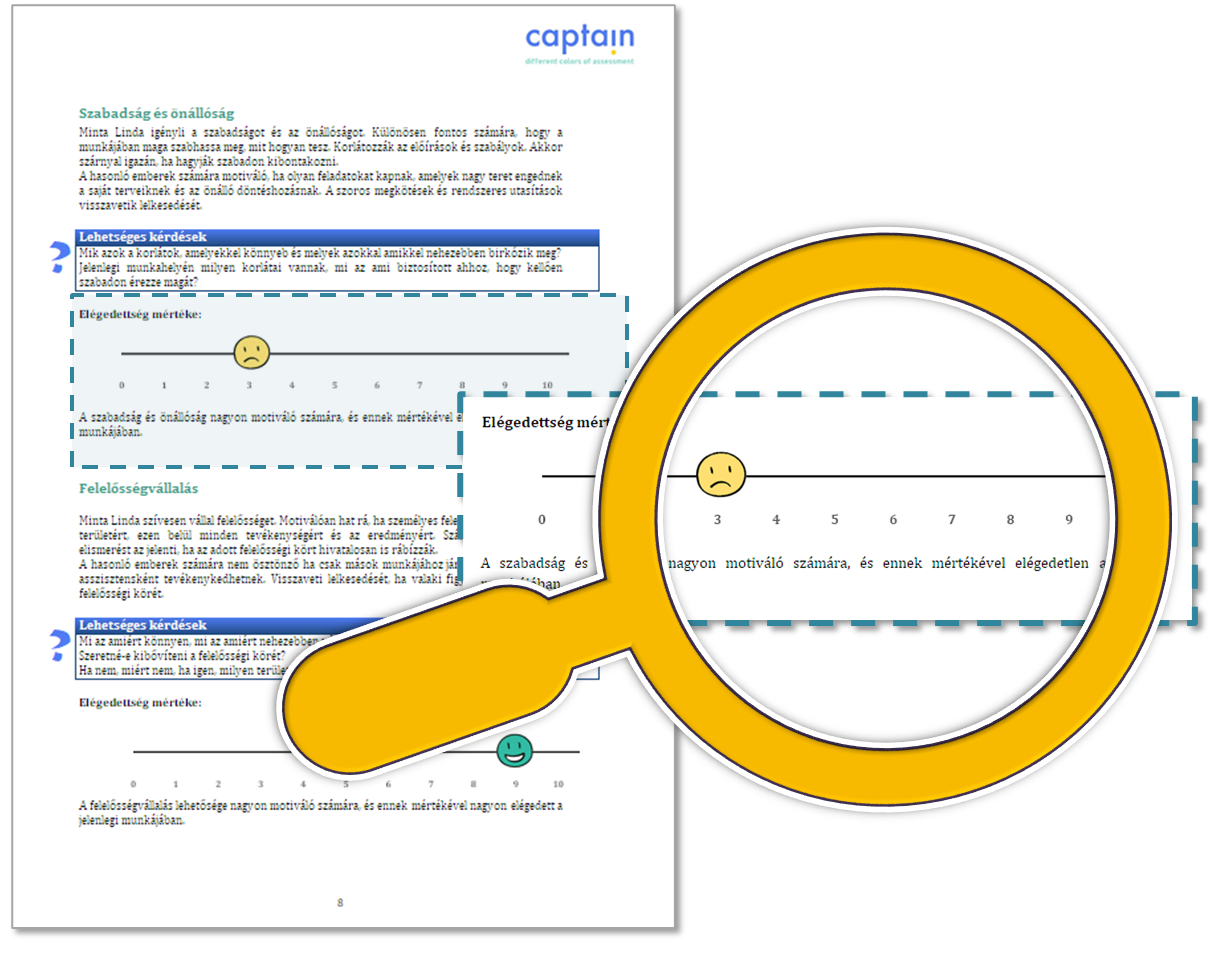CAPTain Motivation analysis
The aim of the CAPTain Motivational Test is to explore the persons’ individual motives driving his/her decisions and behavior at work consciously or unconsciously. The questionnaire consists of 70 workplace relevant statements about personal preferencies and desires.
What does the questionnaire measure?
Based on the motivation researches of Super and Schein, the test describes the person along 14 work related motivational factors. These factors describe the persons’ motivational structrue – the most important topics about his/her work, workplace behavior, attitudes and carreer. Based on his/her personal structure we can easily indentify the tools with which we can motivate the person and also find the career path suitable for him/her.
The questionnaire also measures how close the respondent is to each type of motivation based on their motivational pattern. The following 8 types of motivation can be identified:
- Internal motivatinal style
- Engaged motivation type
- Sales motivation type
- External motivation type
- Expert motivation type
- Consultant/service provider motivation type
- Entrepreneurial motivation type
- Leadership motivational type
The report from the test result first graphically displays how strongly each motivator affects the person, as well as a detailed description about the strength of each motivator and its meaning to the respondent.
Regarding factors that are important to the respondent, the report includes possible questions to help with the interview or consultation following the test, as a complement for the motivational factors.
The report concludes with a detailed description of the motivational type of the respondent.
CAPTain Satisfaction Measuerement
The CAPTain Satisfaction Questionnaire contains 56 statements that measure the respondent’s level of satisfaction with 14 motivational factors in their current job.
The CAPTain Satisfaction survey is typically used as a complement to the CAPTain Motivation Questionnaire, as it provides an accurate picture of which job characteristics are important to the respondent and how satisfied they are with them in their current job.
Satisfaction measurement can be used on its own, as it supports the retention of employees, provides a good basis for performance appraisal discussions, or even to identify future development directions.
In the case of a group satisfaction survey, we can also get an idea at organizational level of how satisfied employees are with the conditions of each job, what is valued in the life of the company and represent a high retention rate, as well as could be attractive for new colleauges, and what makes colleagues dissatisfied, so it is worth developing at the organizational level.
Report
The report made from the results of the questionnaire first graphically displays how satisfied the person is with each motivator, and then gives a short description as an explanation about the level of satisfaction.

